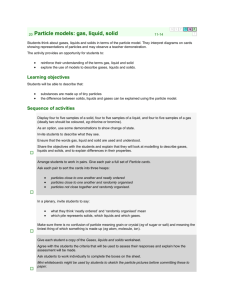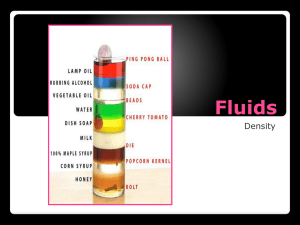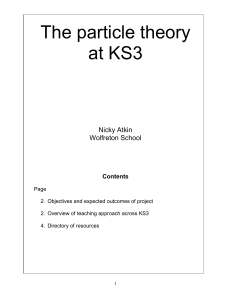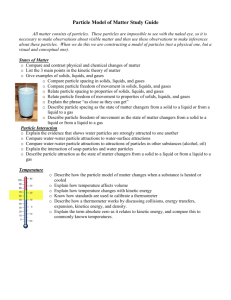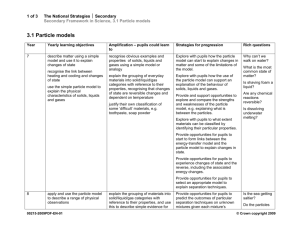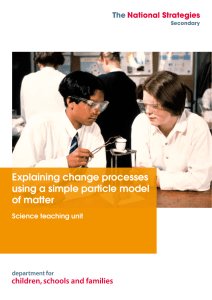Solids, Liquids, Gases: Particle Model Lesson Plan
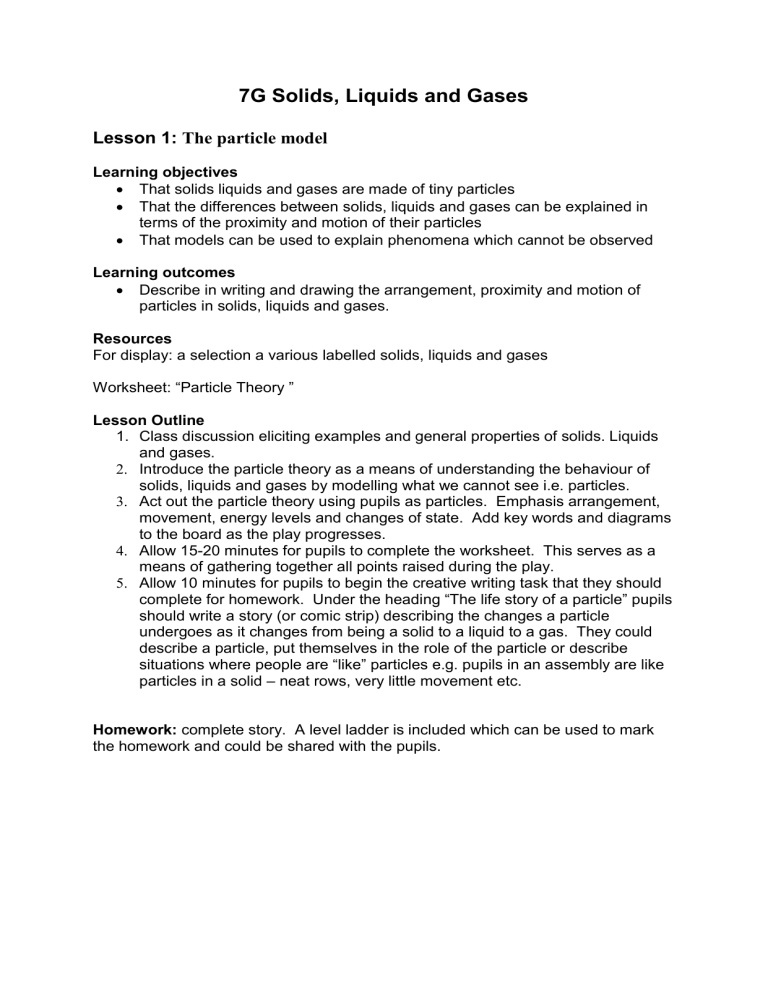
7G Solids, Liquids and Gases
Lesson 1: The particle model
Learning objectives
That solids liquids and gases are made of tiny particles
That the differences between solids, liquids and gases can be explained in terms of the proximity and motion of their particles
That models can be used to explain phenomena which cannot be observed
Learning outcomes
Describe in writing and drawing the arrangement, proximity and motion of particles in solids, liquids and gases.
Resources
For display: a selection a various labelled solids, liquids and gases
Worksheet: “Particle Theory ”
Lesson Outline
1. Class discussion eliciting examples and general properties of solids. Liquids and gases.
2.
Introduce the particle theory as a means of understanding the behaviour of solids, liquids and gases by modelling what we cannot see i.e. particles.
3.
Act out the particle theory using pupils as particles. Emphasis arrangement, movement, energy levels and changes of state. Add key words and diagrams to the board as the play progresses.
4.
Allow 15-20 minutes for pupils to complete the worksheet. This serves as a means of gathering together all points raised during the play.
5.
Allow 10 minutes for pupils to begin the creative writing task that they should complete for homework. Under the headi ng “The life story of a particle” pupils should write a story (or comic strip) describing the changes a particle undergoes as it changes from being a solid to a liquid to a gas. They could describe a particle, put themselves in the role of the particle or describe situations where people are “like” particles e.g. pupils in an assembly are like particles in a solid – neat rows, very little movement etc.
Homework: complete story. A level ladder is included which can be used to mark the homework and could be shared with the pupils.
The life of a particle – level ladder
Level 4
I have shown that differences between a solid, a liquid and a gas by saying what they are like.
Level 5
I have said how the changes between solids, liquids and gases happen.
Level 6
I can draw a picture of particles in a solid, a liquid and a gas and I can say how the particles move. I can also say how the amount of energy is different in each state.
Level 7
I have used particles to give a description of how they change when going from solid to liquid and from liquid to gas. I can explain this for changes going the other way.


